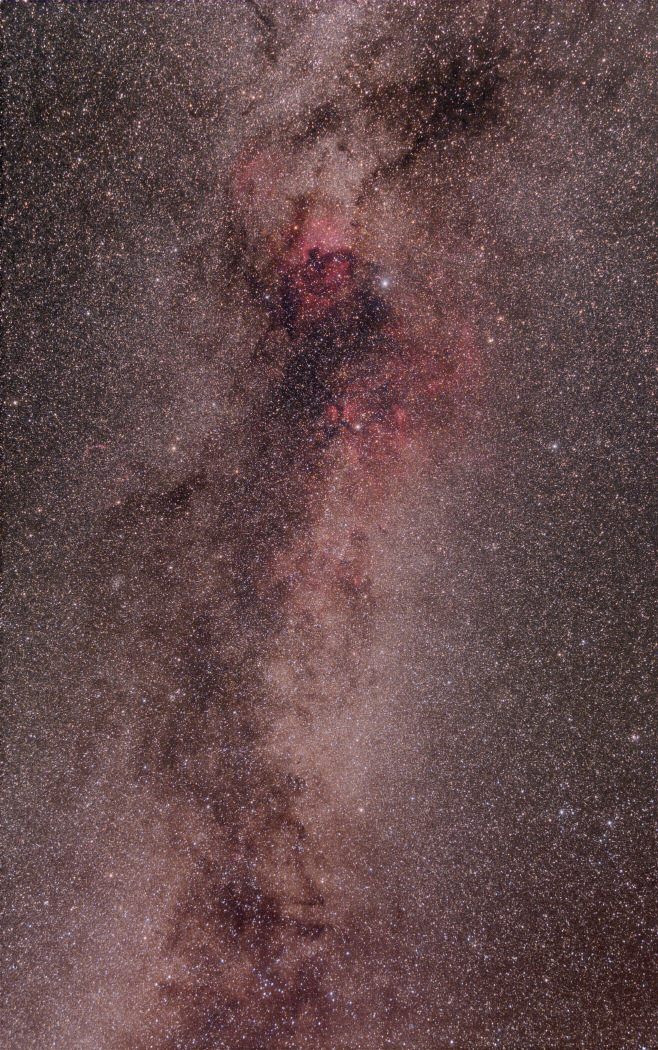
Cygnus is one of the most awesome and interesting constellations in the northern Milky Way as it contains innumerable multi-colored stars and many large emission nebulae, dark nebulae and one supernova remnant, the Veil or Cirrus Nebula, which is located towards the left edge in the photograph shown above. The dominating stars of Cygnus form a cross, sometimes called the "Cross of the North", which can be traced in the photograph: Alpha Cygni - Deneb - the brightest star near the top, Gamma Cygni - Sadr - just above the center, and Beta Cygni - Albireo - near the bottom form the vertical beam; Epsilon Cygni at left, Gamma and Delta Cygni at right form the horizontal beam. The Milky Way in Cygnus seems bisected by a dark absorption lane formed by unilluminated durst and gas located roughly near the plane of our Galaxy. The constellation Cygnus contains 804 square degrees of the sky; the center culminates approximately on July 29th at midnight.
 Milky Way Vista - Cygnus to Cassiopeia, zoom lens photograph.
Milky Way Vista - Cygnus to Cassiopeia, zoom lens photograph.
 Central Cygnus Region, zoom lens photograph.
Central Cygnus Region, zoom lens photograph.
 Vulpecula and Sagitta, zoom lens photograph.
Vulpecula and Sagitta, zoom lens photograph.
 Veil Nebula and Surrounding Area, telelens photograph.
Veil Nebula and Surrounding Area, telelens photograph.
 Sh2-119 in Cygnus, Wright-Newtonian photograph.
Sh2-119 in Cygnus, Wright-Newtonian photograph.
 LDN 998 Region in Cygnus, CMOS image.
LDN 998 Region in Cygnus, CMOS image.
 IC 1369 and Environment, Wright-Newtonian CCD-image.
IC 1369 and Environment, Wright-Newtonian CCD-image.
Exposure Data